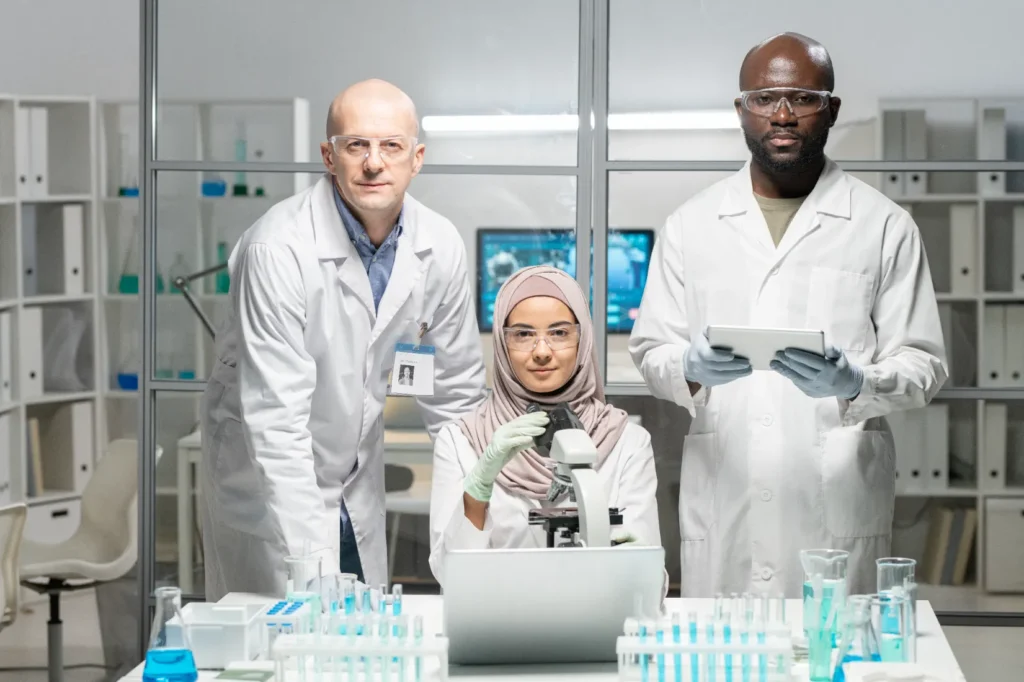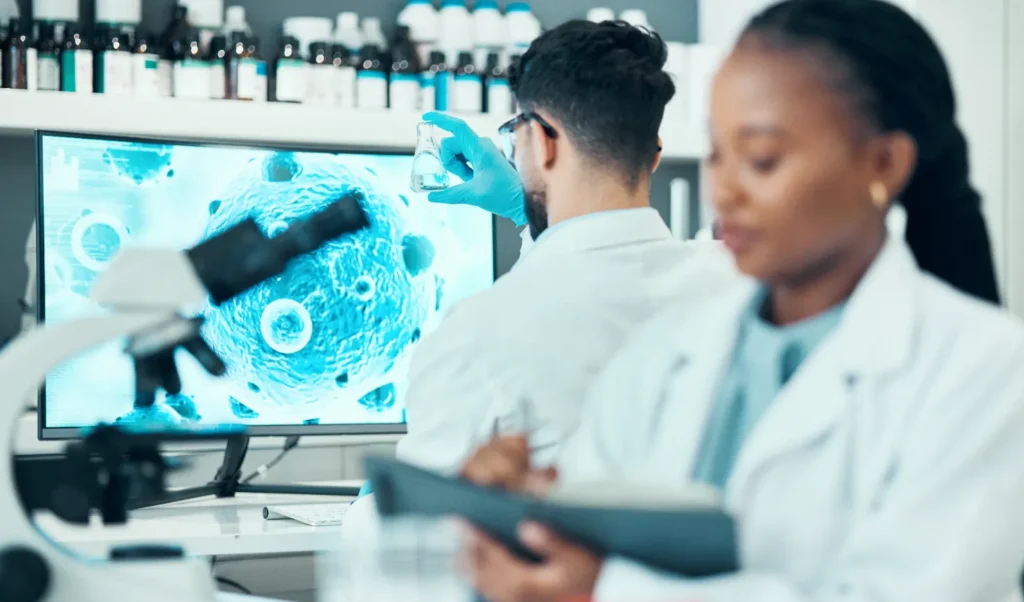
The Future of Healthcare With Stem Cell Research Innovations
For more than a century, medicine has largely been focused on managing symptoms or repairing what’s broken. The promise of stem cell research is different: it aims to rebuild. By directing primitive cells to become mature tissues—or by using their signals to nudge the body to repair itself—care shifts from damage control to restoration. This reframing touches nearly every specialty, from orthopedics and cardiology to neurology and endocrinology. It’s also changing the way therapies are discovered, tested, and manufactured, pushing healthcare toward a future where the default isn’t “live with it,” but “let’s regrow it.”
Stem Cell Research and the New Pipeline From Bench to Bedside
Traditional drug development starts with molecules and ends with pills or infusions; cell-based therapies add new checkpoints. Scientists must not only prove a concept in a dish but also learn how to grow, differentiate, purify, and preserve living products at scale. That means meticulous quality controls, robust release testing, and manufacturing environments built around consistency and safety. The upshot for patients is that clinical translation demands more than a good idea—it requires a reliable process that can deliver the same therapy on day 1,000 as on day 1. This emphasis on reproducibility is making cell therapies look less like bespoke experiments and more like dependable standards of care.
Stem Cell Research Meets Gene Editing: Precision by Design
Editing tools let teams correct disease-causing mutations, add protective features, or switch off risky behaviors before cells ever reach a patient. The result is a targeted function with fewer unknowns, allowing for the tailoring of a product to the biology of a specific condition rather than adopting a one-size-fits-all approach. In practice, this means therapies that are both smarter and safer as they move through development.
Editing Shrinks Uncertainty
Preprogrammed cells act more predictably, reducing the chances of off-target effects and inconsistent outcomes.
Safety Switches Add Control
Built-in “off” mechanisms provide clinicians with a way to halt activity if a reaction or overgrowth occurs.
Exploring Stem Cell Research for Breakthroughs in Organs-on-Demand
When tissue is too severely damaged to recover, the next step is to replace it. Organoids—miniature, lab-grown versions of organs—help researchers model diseases and test treatments more quickly, while 3D bioprinting arranges multiple cell types into structures that resemble real anatomy. Together, these tools shorten the path to functional grafts for skin, cartilage, and eventually more complex tissues. They also make preclinical testing more human-relevant, which reduces the need for trial-and-error once therapies reach patients.
Organoids Guide Decisions
Patient-derived models show how a therapy behaves in a specific genetic and disease background.
Bioprinting Maps Structure
Layer-by-layer placement recreates architecture, allowing implanted tissues to integrate and function properly.
How Stem Cell Research Is Reshaping Neurology and Repair
Neurons don’t regenerate easily, which is why strokes, spinal cord injuries, and degenerative diseases leave lasting deficits. Here, stem cell research explores two paths: replacing lost cells and reprogramming the local environment so surviving neurons reconnect. Transplanted precursors can differentiate into new neurons or supportive glia, while trophic factors improve blood flow, reduce scarring, and encourage sprouting. The near-term wins may be incremental—better hand function, steadier gait, fewer spasms—but the bigger impact lies in reshaping long-term disability curves for conditions once deemed static.
Stem Cell Research for Cardiac and Vascular Healing
Heart muscle damaged by ischemia doesn’t bounce back on its own. By supplying cardiomyocyte precursors or endothelial support cells, clinicians can bolster pumping function and stabilize microvasculature. Even when cells don’t persist, their secreted factors can tamp down inflammation and remodel scar into more compliant tissue. On the vascular side, engineered grafts seeded with patient-compatible cells promise fewer clots and fewer repeat procedures compared to inert tubes.
Mending the Pump
New muscle cells and pro-repair signals can improve ejection fraction and exercise tolerance after injury.
Building Better Vessels
Cell-informed grafts and patches integrate more naturally, resisting failure over time.
Stem Cell Research and Autoimmune Reset
Autoimmune disease is as much a miscommunication as an attack. By rebooting hematopoietic systems or introducing cell populations that foster tolerance, researchers aim to quiet misdirected immunity without suppressing it across the board. The approach is nuanced: re-educate, don’t just disable. For patients, success would look like more prolonged remissions, fewer steroids, and organ sparing—outcomes that significantly improve quality of life with lower cumulative side effects.
The Role of Stem Cell Research in Diabetes and Insulin Restoration
Diabetes therapies increasingly focus on replacing what’s missing rather than chasing it. Beta-like cells derived from pluripotent sources can sense glucose and release insulin, offering a biological response that mirrors a healthy pancreas. The hurdles are protection from immune attack and a delivery format that supplies oxygen and nutrients. Encapsulation devices and immune-modulating strategies are two complementary approaches that work together to make these grafts durable in everyday life.
Encapsulation Protects Grafts
Semipermeable barriers let nutrients and insulin pass while blocking destructive immune cells.
Immune Tolerance Matters
Teaching the immune system to ignore the graft reduces device burden and improves longevity.
Stem Cell Research Beyond Cells: Secretomes and Exosomes
Sometimes the payload is information, not a cell. Extracellular vesicles carry proteins, RNAs, and lipids that accelerate healing, angiogenesis, and immune balance. Because they are non-living, they may be easier to store, standardize, and ship than whole-cell products, yet still capture much of the regenerative signal. The emerging art is designing vesicle “dictionaries” that precisely state what a damaged tissue needs to hear and nothing it doesn’t.
Signals Carry Instructions
Vesicles can redirect immune responses and recruit local cells to rebuild tissue architecture.
Stability Improves Delivery
Formulations that withstand transport and time broaden real-world access.
Stem Cell Research, Manufacturing, and Access
Innovation only matters if people can receive it. Manufacturing is moving from artisanal batches to scalable systems with closed bioreactors, automated monitoring, and rigorous analytics. Allogeneic “off-the-shelf” products simplify logistics compared to autologous approaches, though they introduce immunology questions that must be managed. Cold-chain reliability, standardized dosing, and clear labeling are unglamorous but essential steps that transform promising prototypes into everyday therapies available beyond academic centers.

Stem Cell Research Ethics, Equity, and Governance
Innovation only matters if people can receive it. Manufacturing is transitioning from artisanal batches to scalable systems, utilizing closed bioreactors, automated monitoring, and rigorous analytics. Allogeneic “off-the-shelf” products simplify logistics compared to autologous approaches, though they introduce immunology questions that must be managed. Cold-chain reliability, standardized dosing, and clear labeling are unglamorous but essential steps that transform promising prototypes into everyday therapies available beyond academic centers.
The Intersection of Stem Cell Research and AI for Safer Studies
Machine learning accelerates discovery by predicting differentiation protocols, optimizing culture conditions, and flagging early toxicity signals. It also helps select trial participants who are most likely to benefit, increasing the likelihood that studies will yield clear results. In hospitals, algorithms can track outcomes and reagent performance, closing the loop between the lab, clinic, and manufacturing to maintain high quality as volumes increase.
Models Cut Attrition
In-silico screening prunes weak candidates before expensive lab and clinical work.
Real-World Data Steers Care
Continuous feedback refines dosing, timing, and patient selection after approval.
Stem Cell Research in Everyday Clinics
The earliest impact points are places where small gains change lives—orthopedic pain, chronic wounds, corneal repair, and hard-to-heal cardiac or vascular complications. Expect therapies that augment existing procedures rather than replace them outright, like surgical patches with pro-healing cells or eye treatments that restore a smoother surface for clearer vision. As safety and consistency improve, indications will expand from single-organ fixes to systemic conditions that need coordinated renewal.
Challenges That Could Slow Stem Cell Research and Ways Forward
Three bottlenecks recur: cost, complexity, and clarity. Cost falls as processes standardize and volumes rise. Complexity yields to automation and improved assays that verify identity, purity, and potency without compromising a precious batch. Clarity—especially for patients—comes from strong professional guidelines and enforcement that separate legitimate treatments from cash-only, unproven offerings. When these barriers loosen together, adoption quickens and outcomes become more predictable.

Stem Cell Research and the Next Decade
The most realistic picture of the next 10 years is not science fiction’s regeneration on demand, but steady normalization. More hospitals will offer cell-supported procedures with clear protocols and published outcomes. Chronic diseases will have new “reset” options that blend cell products with devices and drugs, and many of the therapies will feel routine rather than experimental. Behind the scenes, manufacturing will resemble modern biologics plants—complete with clean rooms, sensors, and dashboards—while clinics will remain familiar, featuring the same exam rooms and conversations, but incorporating new tools. That’s the mark of transformation done well. The future of care powered by stem cell research will feel less like a revolution and more like a reliable upgrade to how medicine already serves people—fewer limits, more restoration, and a wider path back to health.
Visit the Stem Health Plus LLC blog to learn more about stem cell research and other revolutionary scientific advancements taking place now and in the future.
